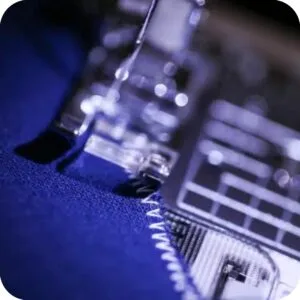
Solving Fabric Slippage Fabric slippage is a common issue in the textile industry, causing misalignment, reduced durability, and weakened seams in garments and products. This phenomenon occurs when fibers in the fabric shift under stress, compromising the material’s integrity. Manufacturers and designers must address this issue to ensure high-quality textiles for various applications.
In this article, we’ll explore the causes of fabric slippage, effective solutions, and preventive measures. We’ll also highlight the premium fabric solutions offered by Fabrics-FTY.com and JacquardPro.com, two leading textile innovators.
1. Understanding Fabric Slippage/Solving Fabric Slippage
a. What is Fabric Slippage?
Fabric slippage occurs when threads in the weave of a fabric shift or slide, usually along seam lines. This can lead to gaps or distortions, reducing the aesthetic and functional quality of the textile.
b. Causes of Fabric Slippage
1.Loose Weave: Fabrics with a loose weave have less friction between fibers, making slippage more likely.
2.Low Thread Count: Fewer threads per inch create larger gaps, increasing the potential for thread movement.
3.Fiber Type: Smooth fibers like silk or polyester are more prone to slippage compared to textured fibers like cotton or wool.
4.Improper Sewing Techniques: Poorly constructed seams can exacerbate slippage under stress.
5.High Stress Areas: Regions like shoulders, knees, or elbows in garments are more likely to experience slippage.
c. Common Fabrics Prone to Slippage
•Silk
•Chiffon
•Polyester Blends
•Nylon Fabrics
Discover high-quality, well-constructed fabrics designed to minimize slippage at Fabrics-FTY.com.
2. Techniques to Solve Fabric Slippage/Solving Fabric Slippage
a. Reinforcement Methods
1.Stitch Reinforcement: Use double or triple stitching along seams to reduce thread movement.
2.Interfacing: Adding an extra layer of fabric, such as fusible interfacing, strengthens the material and reduces slippage.
3.Binding Edges: Encasing fabric edges with bias tape or similar materials prevents fibers from shifting.
b. Fabric Finishes
1.Resin Coatings: Applying a resin finish increases fabric stiffness, reducing the likelihood of slippage.
2.Anti-Slip Backing: Textiles treated with anti-slip coatings maintain their structure under stress.
c. Weaving Techniques
1.Tighter Weave Structures: Fabrics with higher thread counts are less likely to experience slippage.
2.Jacquard Weaves: These intricate designs inherently reduce thread movement due to their complex patterns.
Explore jacquard fabrics at JacquardPro.com.
d. Proper Sewing Techniques
1.Adjust Tension: Ensure correct thread tension during sewing to avoid uneven stress distribution.
2.Smaller Stitches: Use smaller stitch lengths for better seam durability.
3.Use of Stay Tape: Apply stay tape to stabilize seam lines in high-stress areas.
e. Alternative Construction Methods
1.Welded Seams: Heat or ultrasonic welding replaces traditional stitching, eliminating slippage entirely.
2.Seamless Garments: Innovative seamless knitting techniques bypass seam-related issues.
3. Preventing Fabric Slippage During Manufacturing/Solving Fabric Slippage
a. Material Selection
•Opt for fabrics with tight weaves or inherent texture to reduce slippage risks.
•Check out Fabrics-FTY.com for a wide range of high-quality options.
b. Testing and Quality Control
•Conduct slippage tests, such as seam slippage resistance tests, to evaluate fabric durability.
•Implement rigorous quality checks during production to identify and address potential issues early.
c. Enhanced Fabric Designs
•Utilize innovative jacquard patterns from JacquardPro.com to create fabrics that combine aesthetics and functionality.
d. Collaboration with Experts
•Work with experienced textile suppliers to source fabrics engineered to resist slippage.
•Partner with designers to incorporate anti-slippage features into garment designs.
4. Applications of Anti-Slip Fabrics/Solving Fabric Slippage
a. Fashion Industry
•High-Stress Garments: Anti-slip fabrics ensure durability in areas like shoulders, elbows, and knees.
•Luxury Fashion: Jacquard patterns enhance both style and functionality in high-end clothing.
b. Outdoor Gear
•Tents and Backpacks: Reduced slippage increases the longevity of seams in outdoor products.
•Protective Clothing: Anti-slip textiles improve safety and durability.
c. Upholstery and Home Textiles
•Furniture Covers: Slippage-resistant fabrics maintain structure and aesthetics over time.
•Carpets and Rugs: Enhanced stability underfoot.
d. Industrial Applications
•Workwear: Seam durability is critical in environments requiring protective gear.
•Automotive Interiors: Fabrics resistant to slippage improve longevity and appearance.
Explore the wide range of applications for anti-slip fabrics at Fabrics-FTY.com.
5. Innovations in Anti-Slip Textiles/Solving Fabric Slippage
a. Advanced Weaving Techniques
•High-performance looms create intricate patterns that enhance stability.
•Jacquard weaving adds an aesthetic touch while reducing thread movement.
b. Smart Textiles
•Fabrics embedded with sensors detect and respond to stress, offering real-time monitoring.
c. Sustainable Solutions
•Recycled fibers are increasingly used to create eco-friendly, slippage-resistant fabrics.
•Check sustainable options at Fabrics-FTY.com.
d. Nanotechnology
•Nano-coatings improve anti-slip properties without adding bulk to the fabric.
6. Challenges and Future Directions/Solving Fabric Slippage
a. Balancing Comfort and Durability
•While anti-slip treatments enhance durability, they can affect the softness of the fabric. Future innovations aim to strike a perfect balance.
b. Cost Considerations
•Advanced techniques and finishes can increase production costs. Manufacturers are exploring affordable solutions without compromising quality.
c. Expanding Applications
•Research continues to expand the use of anti-slip textiles in areas like sportswear, military gear, and medical applications.
For cutting-edge developments in anti-slip fabrics, visit JacquardPro.com.
Conclusion/Solving Fabric Slippage
Fabric slippage is a manageable challenge with the right techniques, materials, and innovations. By addressing slippage issues, manufacturers can enhance the durability, functionality, and aesthetics of their products.
Whether you’re sourcing anti-slip fabrics for fashion, outdoor gear, or industrial applications, Fabrics-FTY.com and JacquardPro.com offer tailored solutions to meet your needs. Explore their extensive product range and elevate your textile projects today.
#AntiSlipFabrics #FunctionalTextiles #FabricDurability #SeamIntegrity #JacquardFabrics #TextileInnovation #FabricsFTY #JacquardPro #SustainableTextiles #HighPerformanceFabrics #Solving Fabric Slippage


